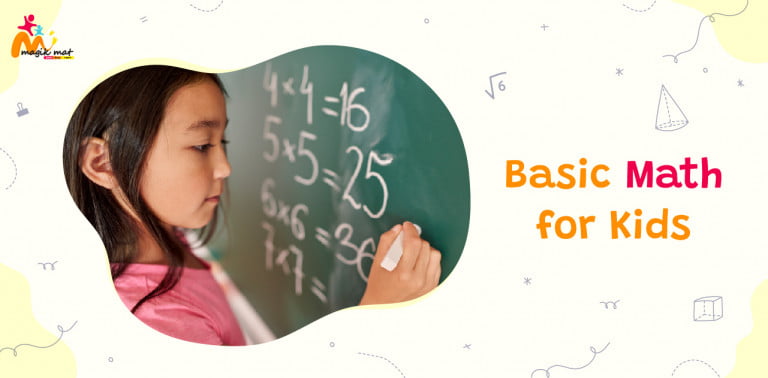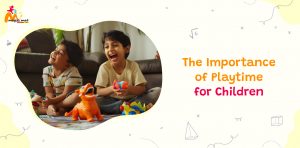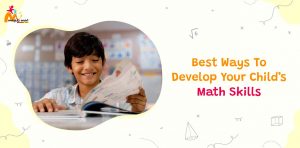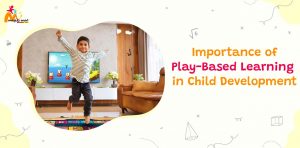Introduction:
Basic math for kids lays the groundwork for children’s learning and growth. It covers the fundamental mathematical ideas that all children should learn from a young age. Basic mathematical operations such as addition, subtraction, multiplication, and division are included, as are concepts such as counting, fractions, and decimals.
Mathematics is an important subject that shapes a child’s brain and problem-solving abilities. In this blog, we will explore the importance of basic math for kids and how parents and teachers can help kids learn math in some fun and engaging ways. By the end of this blog, you will have a better understanding of why basic math concepts are important for your child’s success, as well as some practical tips for assisting their learning.
What Is Mathematics?
Mathematics is one of the most important subjects. Mathematics simply means learning, studying, and obtaining knowledge. Mathematical theories and basic math concepts help kids to understand and solve a variety of difficulties in both academic and real-life circumstances.
Mathematics is a logical discipline. Understanding basic math concepts will assist kids in developing their problem-solving and logical reasoning abilities. Solving math puzzles is one of the best brain exercises.
Mathematics is the study of numbers, shapes, data, measurements, and logical activity. It has a wide range of applications in every aspect of our lives, including medicine, engineering, finance, natural science, economics, and so on. We are all surrounded by a mathematical environment.
Number Counting 1 to 100
One of the first math skills that children should learn is counting. There are many ways to practice counting, but a fun, engaging counting activity is the best way to learn to count.
Counting from 1 to 100 for children is a standard skill in early childhood education that includes number recognition, number names, counting sequences, etc. It is essential for children to count every day. Oral counting helps them hear how numbers sound and learn their sequence.
Count and color, fill missing numbers, write the number of tens and units, match the numbers, circle the numbers, and pop bubbles are some of the math activities that can assist kids in learning how to count from 1 to 100.
Use engaging and practical counting activities to teach kids how to count. Learning will be enjoyable for kids, resulting in a satisfying and joyful experience with learning. They’ll repeatedly request to participate in these games and activities, which will provide kids with more opportunities to practice counting.
Activities to Learn Counting
A fun math activity for kids is to write a number on the board and let students call it aloud. For variation, students can take turns writing a number for others to guess. This simple activity can be interesting and involved.
Coloring is a relaxing and enjoyable activity for many children. To review numbers up to 100, use a “find and color” sheet.
Bingo, a popular game, is a pleasant way to practice numbers. Make sure students flip their cards after each round so they can practice different kinds of numbers throughout the game.
Hang numbers throughout the room and organize a treasure hunt for them!
Magik Mat, an educational product, is an easier way of teaching numbers with its plenty of educational games that make their learning fun.
These are some of the fun math activities for kids where they can learn numbers in enjoyable ways.
Basic Arithmetic Operations
Arithmetic operations are the study of numbers and mathematical operations.
The four basic arithmetic operations in Maths, for all real numbers, are:
Addition (Finding the Sum; ‘+’)
Subtraction (Finding the difference; ‘-’)
Multiplication (Finding the product; ‘×’)
Division (Finding the quotient; ‘÷’)
Basic arithmetic operations are essential for a child’s mathematical development. Start with simple addition and subtraction problems and gradually increase the difficulty level. Utilize visual aids like counting blocks, fingers, or pictures to help them understand the concepts. Practice regularly and make it fun by playing games or using real-life scenarios. Encourage your child to ask questions and explain their thought process to solidify their understanding. As they progress, introduce multiplication and division, and reinforce their knowledge with regular practice. Patience and consistent effort are key to helping kids learn arithmetic operations.
Multiplication Table
A list or chart displaying the multiples of a particular number is known as a multiplication table. It shows children how to quickly calculate solutions and multiply two numbers. It is a mathematical table that describes the multiplication operation in an algebraic system. It lists the products of all combinations of numbers from 1 to 10 or higher in a systematic format. It is a fundamental skill for learning mathematics and is useful in everyday life for tasks such as calculating tips or determining quantities of items to purchase etc.
Conclusion
Teaching basic math to children is crucial for their overall academic development. Basic math concepts like addition, subtraction, multiplication, and division lay the groundwork for more complex math skills that children will acquire as they continue through school. Furthermore, math is a valuable life skill that is used in various real-world situations such as shopping, cooking, and budgeting. Kids can develop solid arithmetic skills that will serve them well throughout their lives by beginning with simple concepts and then expanding them. To make math entertaining and engaging for children, teachers and parents can use a number of resources, such as textbooks, online learning platforms, and educational products.
Frequently Asked Questions
Who is the Father of Mathematics?
Archimedes, (287-212 BC) is known to be the Father of Mathematics.
What is Vedic Maths?
Vedic Maths is a collection of techniques and principles derived from the Vedas, ancient Hindu scriptures, for performing mathematical calculations more efficiently and quickly. Vedic maths is based on 16 sutras and 13 sub-sutras, providing an outline for dealing with mathematical issues. These sutras, addresses a variety of mathematical topics including arithmetic, algebra, geometry, and trigonometry, which can be used to quickly and easily answer challenging problems.
What is Addition?
Addition is the process of combining two or more numbers. The numbers being added are known as addends, while the result of the addition process is known as the sum. In basic arithmetic, addition is represented by the plus sign (+).
Example: 5+5, the sum is 10.





